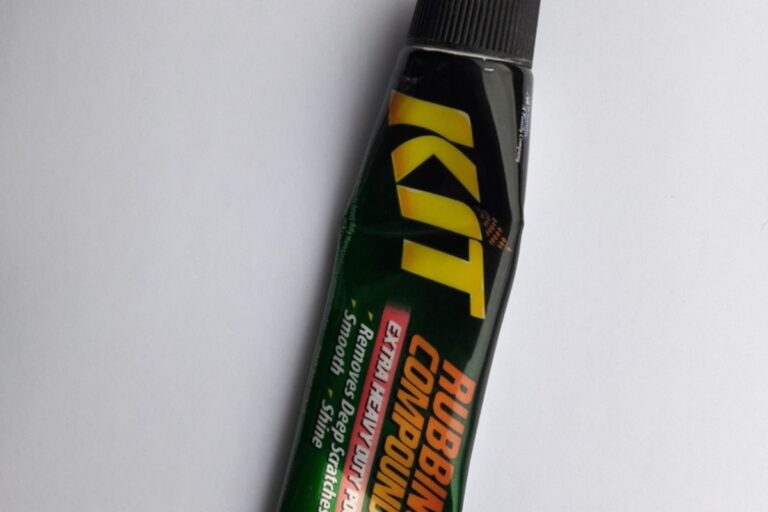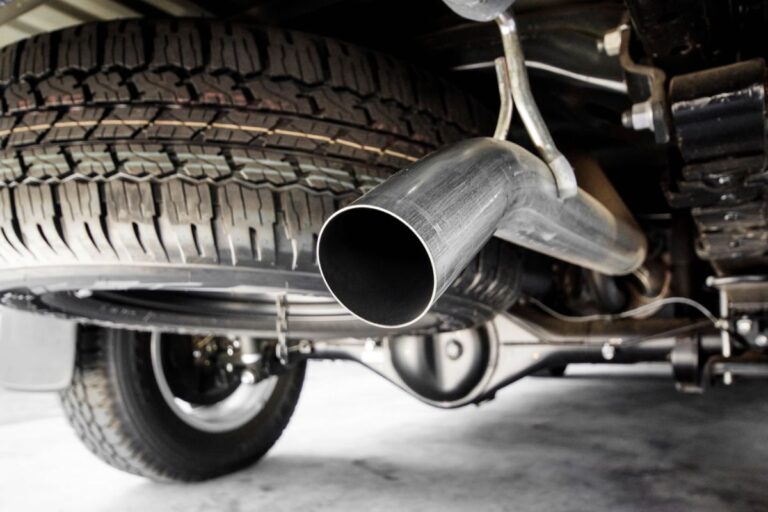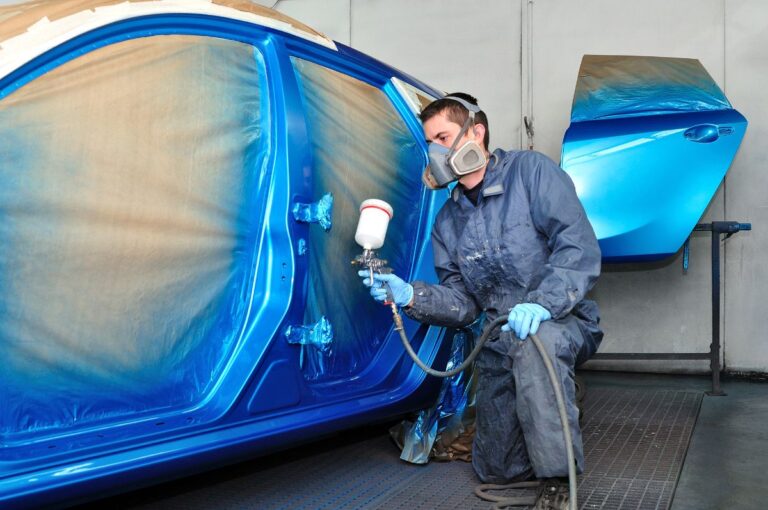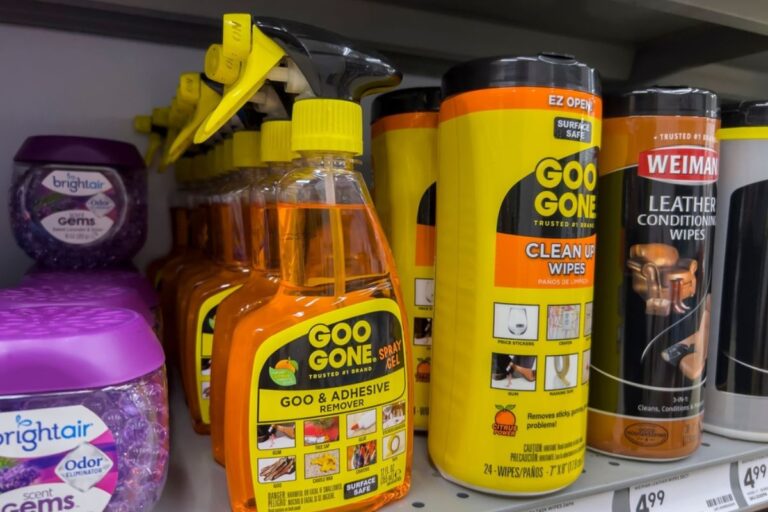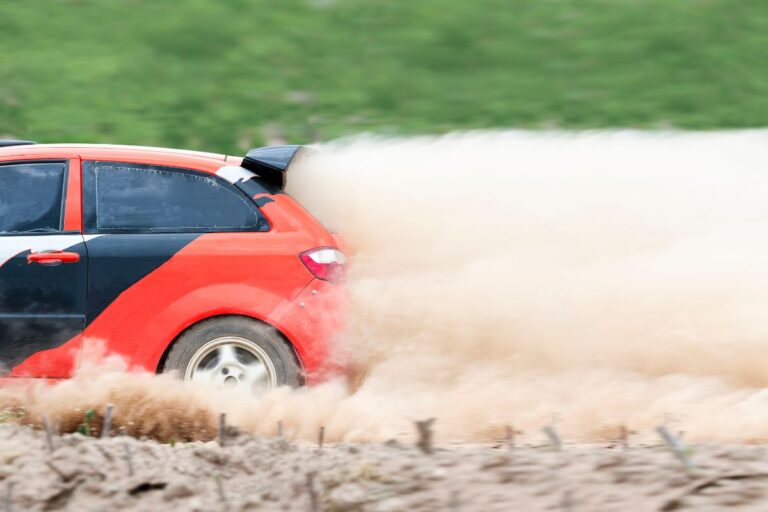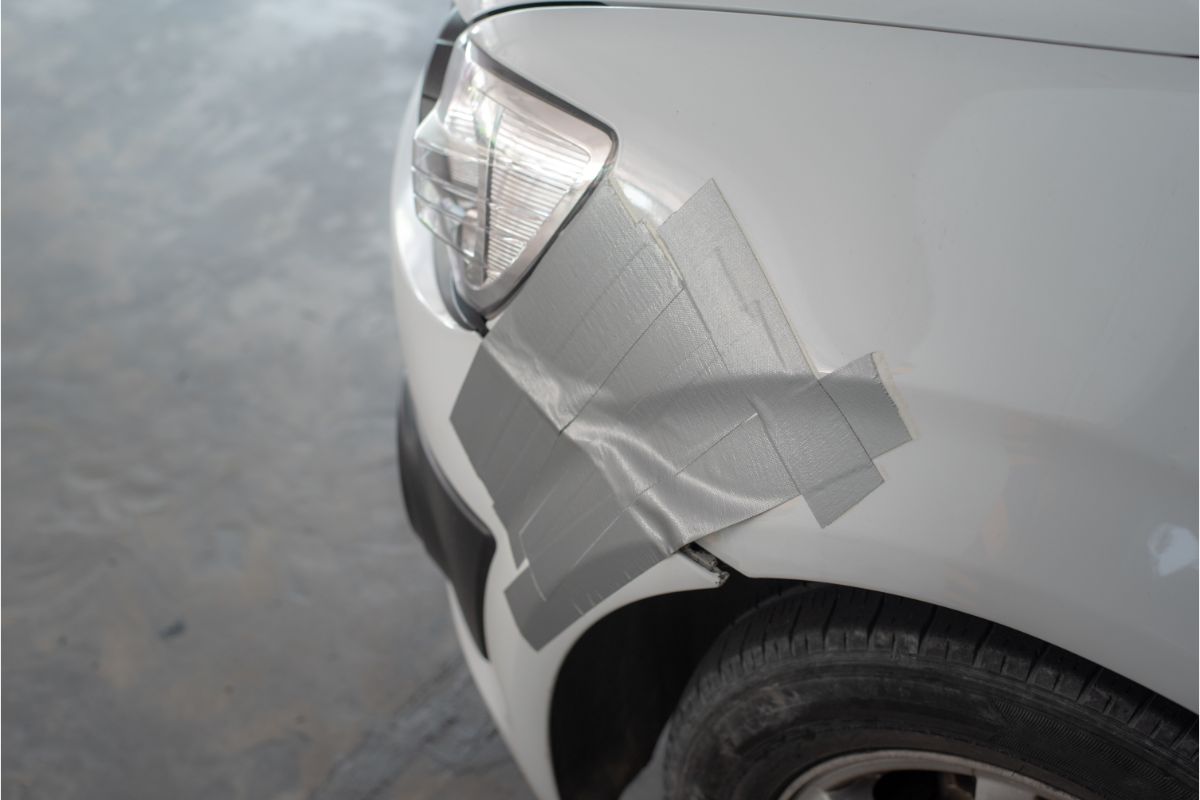
Duct tape is not known to damage the paint on vehicles. If that occurs, it’s either that the paintwork was already bad or you used the wrong method to remove the tape residue. For many years, auto repair shops have been utilizing duct tape to keep parts together without incident as they work on our vehicles.
Cars and tape go hand in hand and sometimes we use whatever is handy and oftentimes that’s duct tape. Yes, it can prove annoying to remove as it leaves a residue, but thankfully it doesn’t damage the vehicle. We’re the ones who usually end up messing up the paintwork.
Let’s look at the impact of duct tape on car paint, how to remove it safely, and the best tape options for your car.
Related: Why Does Car Paint Bubble?
Will Duct Tape Damage Car Paint?
Except for sticking to it, duct tape has no direct effect on automotive paint. With that said, flaking and peeling are possible if the car’s paint is old and in need of replacement.
The removal of duct tape is complicated by the sticky residue it frequently leaves behind. The paint could be marred if removing tools like metal scrapers or sandpaper are used incorrectly. Due to the long-lasting nature of duct tape’s adhesive, the amount of damage done to the vehicle is proportional to how long the tape stays on it.
The adhesiveness of duct tape can be affected by the weather. Extreme heat has the potential to melt the adhesive, further bonding it to the automobile. When exposed to water and allowed to dry, the adhesive becomes hard and forms a strong bond with the surface it is applied to.
The Easiest Method to Get the Adhesive Off of Your Car
The following are some suggestions for removing duct tape from a vehicle.
Required Tools
To remove the sticky residue, you may require the following:
- Water
- The active ingredient in a cleaning solvent
- ID or other cards made of plastic (rather than metal scraper)
- Nail polish remover or rubbing alcohol
- Blow dryer
First Technique: Using Rubbing Alcohol or Solvent
You can use rubbing alcohol or nail paint remover for this procedure; rubbing alcohol is more convenient because it is often already in the house. You’ll want to be mindful of the amount you put on and be gentle when removing it.
You might also use a cleaning solvent, such as the ones found in the automotive line of Goo Gone. Taking off adhesive glue with this procedure is the most expert alternative to avoid ruining paintwork. To soften the glue without causing any corrosion or rusting of the vehicle, you can use any cleaning solvent that is designed for auto-body maintenance.
To use this strategy, your steps are as follows:
A small amount of solvent or alcohol should be applied to the sticky areas. It’s recommended to soak the car for at least a few minutes to loosen the glue. To remove the glue and the solvent, wipe the area with a clean rag gently. No evidence must remain.
If you’re going to use alcohol instead of the proper solvent, be careful not to damage the item.
The Second Technique Involves Using Hot Water And a Plastic Scraper
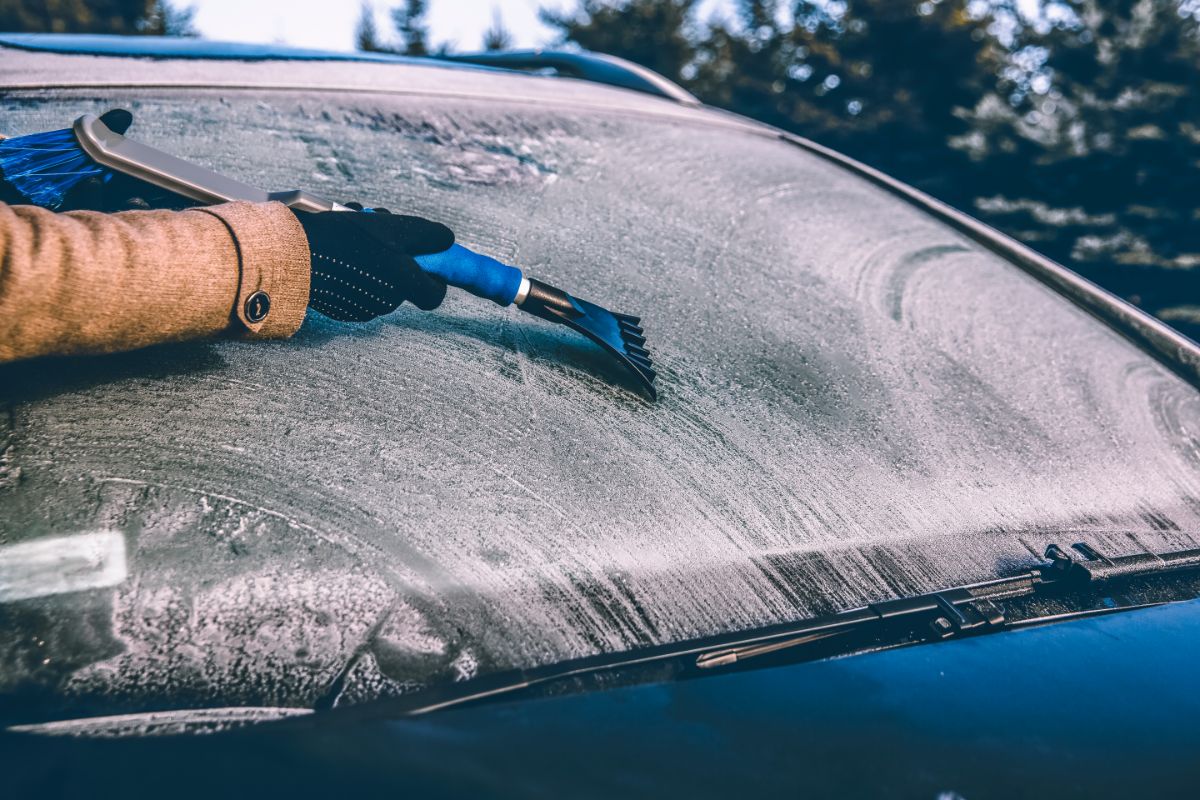
This is the second-safest approach to protecting a freshly painted surface. Although a scraper is preferable, you can remove the glue using a clean towel. Use a plastic scraper or a card; anything with a rounded edge will cause less damage to the paint than a sharp one.
Follow these steps with a scraper and some hot water:
- A heated rag should be soaked.
- Press the rag firmly against the car’s surface for about fifteen minutes while it is on the sticky surface. Duct tape’s adhesive strength improves over time, so it’s best if it’s been used on the automobile for as long as possible.
- When the rag has absorbed enough adhesive, pull it away.
- Gently scrape the surface with a plastic scraper or a fresh rag until it is clean and dry.
Third Technique: Using a Heat Source and a Plastic Scraper
Since no liquids are used in the soaking or removal procedure, this method is the safest for a vehicle’s paint job, but it is also the slowest. Any device that produces hot air, such as a heater or hair dryer, can be used.
This technique requires the use of a scraper. When it comes to protecting your paintwork, plastic is your best bet. For this strategy, you must:
- Get the heater going
- Keep it in place for about a minute on the glue
- Carefully remove the pliable adhesive
- Gentle rhythmically repeat steps 1-3. Never use excessive force when attempting to remove adhesive, as this could cause it to spread and leave unsightly marks or harm the surface you’re trying to remove it from.
The Various Types and Uses for Automotive Tape
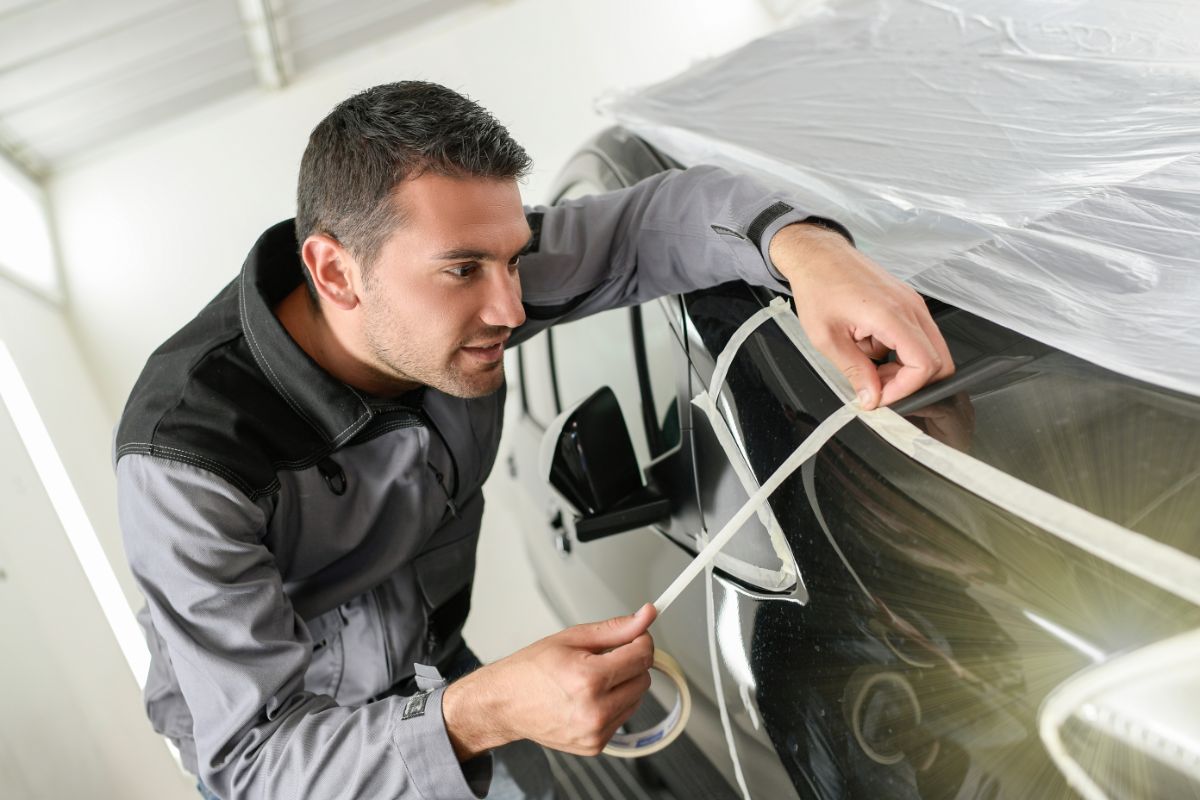
Although all automotive tapes are made to resist tough conditions and heavy loads, they are put to quite varied uses. Listed below are a few examples:
Using masking tape
As its name implies, masking tape is used for short-term applications, usually lasting no more than five days. Labeling, wrapping, concealing, and short-term holding are just some of the many uses for automotive painting tape. This type of tape is typically used in tandem with masking paper or masking film.
This tape is ideal for painting and other small tasks due to its clean lines, easy removal, and adaptability.
Whenever it relates to masking tape for automobile painting, *3M Scotch is a common favorite.
Double-sided Tape
Different styles of double-sided tape for cars are available. Foam and large sheets are also common materials. Automotive double-sided tape, on the other hand, is used for most car interior applications.
It is perfect for making adjustments to the dashboard or other interior parts because it can remain concealed under other components.
Because of its resistance to temperature extremes, ultraviolet radiation, chemicals, and humidity, it can also be utilized for smaller body elements like trims, moldings, bumper trimmings, mirrors, and so on.
Fine Line Tape

In the automotive industry, fine line tape is used to make a thin line for two-tone separation or lettering.
It has good adhesion and is resistant to moisture and solvents, making it useful for longer periods. However, it may be quickly and easily removed thanks to a unique backing. Because of its unique backing and adhesive, this tape can be applied directly over freshly painted acrylic and enamel, as well as any other form of auto paint, without causing any damage.
Slip-resistant
Vehicles don’t require the use of slip-resistant tape, but having some on hand in the garage is a good idea due to the presence of oil and paint.
Thin, grippy tape is put on floors that could be slippery to prevent trips and falls at work.
Conspicuity
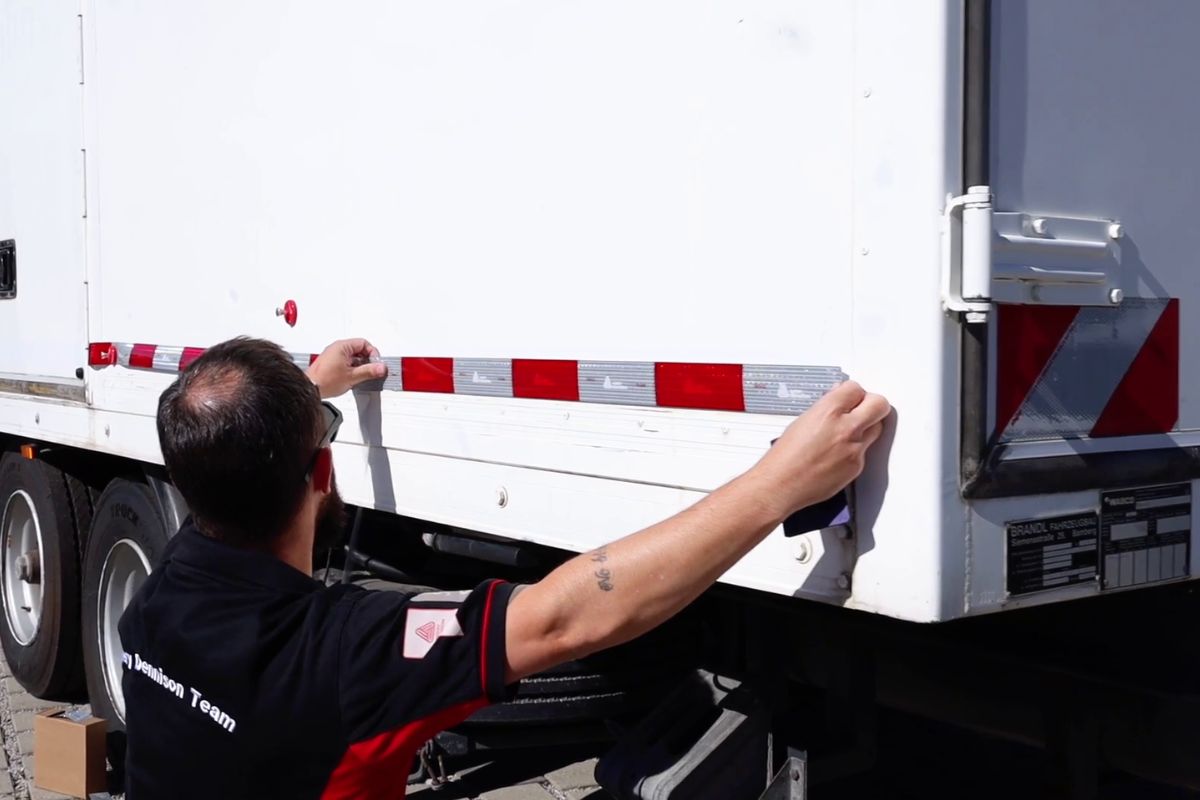
Trucks, safety and emergency vehicles, trailers, and other large vehicles sometimes have conspicuity tape—white, highly reflective tape—affixed to it to increase the vehicle’s visibility and ability to be detected at a distance.
It has a high-quality automotive adhesive and is diamond grade, making it impervious to water, filth, and the majority of weather.
Abrasive Blasting Tapes
Sandblasting and other abrasive tasks, such as auto refinishing, are the most common applications for abrasive blasting tapes. This tape is unique since it is often constructed with rubber or elastomer, making it ideal for rough tasks.
This makes it more durable and secures it in place for the duration of the job.
Plating Tape
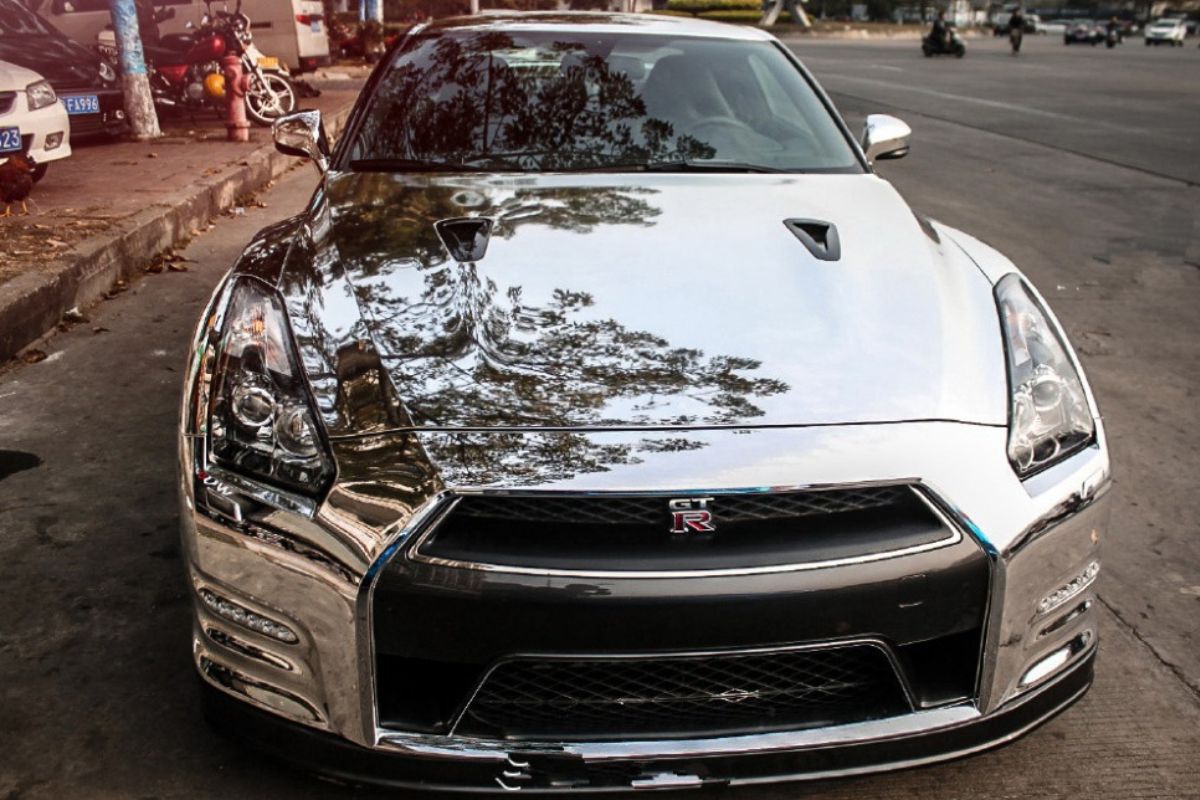
When it comes to tapes for use in the car repair business, plating tape is among the strongest and most resistant options. It is used to safeguard materials that could be damaged by harsh conditions like chemicals or high temperatures.
Auto Masking Tapes: What You Need to Know
One of the most crucial items for a body shop to stock is masking tape, sometimes known as painter’s tape. There are, however, a few things you need to know before going shopping.
Purpose
While there are a variety of masking tapes available for use in automobiles, they all serve the same general goal of preventing overspray, dust, and other damage to the vehicle during the painting process.
It’s a preventative strategy meant to safeguard your work, lessen the amount of time spent cleaning up and repairing mistakes, and guarantee a professional result.
Differentiating Features Of Automotive Masking Tape
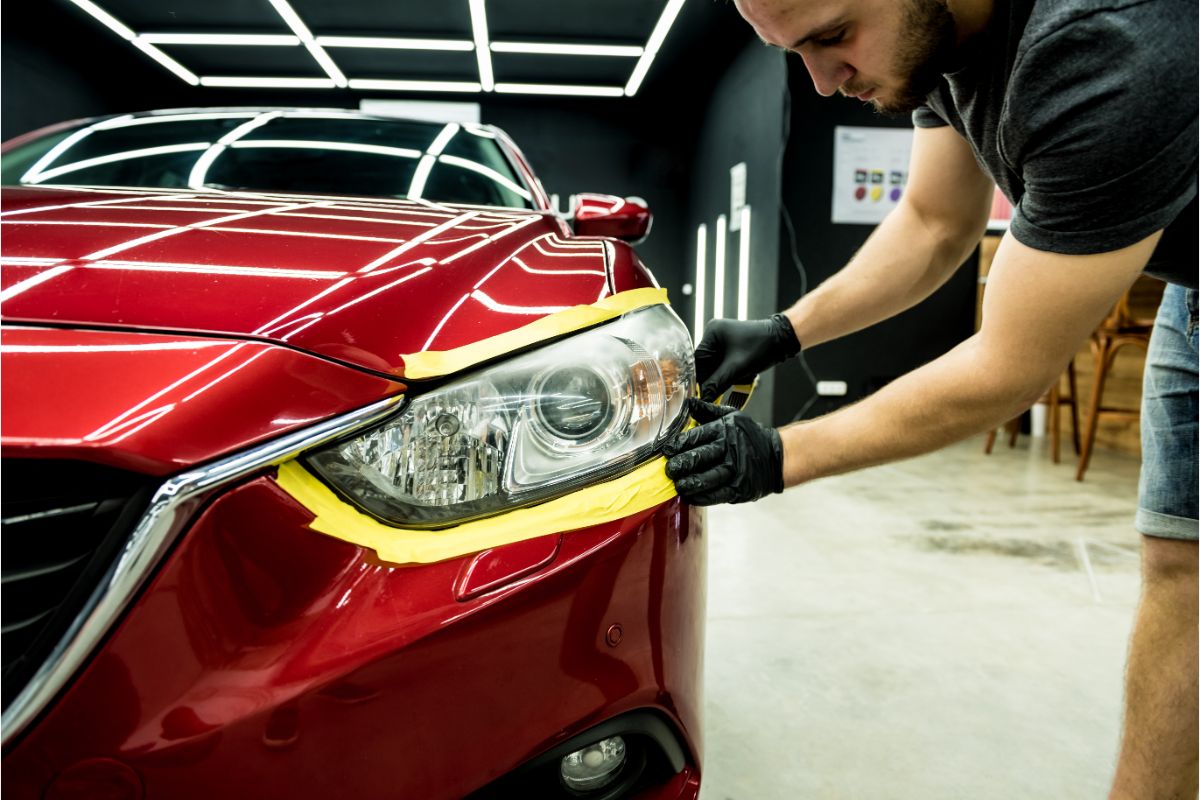
Masking tape used in auto shops differs in several ways from household painter’s tape. The fact that the tape is adhesive and serves a practical purpose seems to be the only common denominator here.
The automotive tape has a unique adhesive, can resist greater temperatures, and holds longer and stronger through a variety of curves and sharp angles, making it ideal for use in automobiles.
This is why masking tape has these characteristics:
- To withstand the increased mechanical force it must endure, it has been made thicker and wider.
- Stronger bonding ensures a longer lifespan, greater stress resistance, and a more secure grasp on the metal frame.
- A high tensile strength, so that it can withstand the strain of the work, and the flexibility to bend around the vehicle’s sharp corners and curved surfaces.
- An excellent automotive tape will have these distinguishing features. While all masking tapes share these commonalities, there are also notable distinctions between them.


